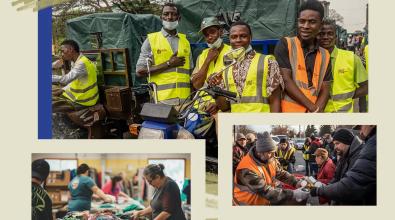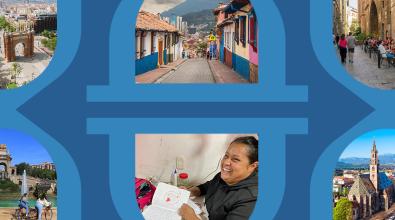How a public-private partnership boosted wellbeing in Santa Monica, Calif.

When tragedy struck Santa Monica, Calif., in the form of a gang shooting and very public 9th-grade student’s suicide, people in the California community of nearly 100,000 began to ask how something like this could happen “in a place with so many resources for young people,” said City Manager Rick Cole.
That question led Santa Monica to create a Youth Wellbeing Report Card in 2012 and, the following year, enter — and win — Bloomberg Philanthropies’ Mayors Challenge with a proposal to expand its wellbeing work citywide. It also led to a deepened relationship between the city and RAND Corporation, a global research organization and think-tank headquartered in Santa Monica.
A joint effort from the start
Santa Monica’s Wellbeing Project — which included creating a framework to understand all it takes for people to thrive, measuring residents wellbeing, and then applying that insight to city plans and policies — was no ordinary endeavor. A first-of-its-kind program in the U.S., it depended on multiple data streams — from city records, surveys, and social media — and required expert research and analysis.
RAND, which works with public- and private-sector clients worldwide, had already partnered with Santa Monica for more than two decades on the city’s pioneering early-childhood education work. It also provided expert guidance and research capacity for the city’s youth wellbeing report card. So when Santa Monica decided to apply for the Mayors Challenge with a proposal to extend its wellbeing work to include all of its residents, RAND was a logical partner.
“When we heard about the Mayors Challenge, I reached out to a longstanding community leader who is a senior RAND staff member who I’ve worked with for many decades,” said Julie Rusk, chief civil wellbeing officer of Santa Monica. “I said we needed to talk with someone who doesn’t just want to do the research but also help us meet the goals of the Mayors Challenge, and that led me to Anita Chandra from RAND.”
Chandra immediately saw how her team could help. “Santa Monica was noodling on an idea that was both complex and messy,” she said. “We were able to help them focus that idea and then help them shape and sharpen it for the award competition.
While driven by both personal and professional interest in the project, Chandra says there was no certainty RAND’s work on the project would extend past theat application phase. The Wellbeing Project “was a big risk, and we were all pleasantly surprised that the idea won,” she said. “When an idea is as multidimensional as this one, it’s sometimes difficult for people to get their arms around it.”
More than business as usual
After Santa Monica was chosen as a Mayors Challenge winner, the city partnered with RAND to continue its work on the project — in part because of the RAND team’s already-proven ability to keep the project focused. “One of the tensions when you work with a research partner is how to keep your focus relevant and applied,” Rusk said. “We [at city hall] live in the world of delivering services and responding to concerns. Anita understands that and is able to take a rigorous data-informed approach with applied-use cases and real-world meaning.”
While Santa Monica benefited from RAND’s research and analytical expertise, the project also provided the RAND team the opportunity to improve their home town by working on an issue that was near and dear to their hearts. “Even though we paid them, the reality was that RAND’s team took this work as a labor of love,” said City Manager Cole. “This wasn’t just a consulting contract, this was something that they were committed to.”
Successful partnership, successful project
Four years after Santa Monica won the Mayors Challengelater, the resulting Wellbeing Index is now central to how the city determines its priorities and measures its own success. When the index revealed that one in five of Santa Monica’s young people wasere lonely all or most of the time, the city started development of a new health and wellness center that will have a presence at the high school. Similarly, when city leaders learned that 23 percent of their residents said traffic and mobility were a concern, they launched transit plans for light rail, bike share, and pedestrian safety.
And cities from around the world are now showing interest in replicating Santa Monica’s success. The first steps, Chandra says, are buy-in from city leaders, a strong team mentality, and — most importantly — an agreed upon, shared vision. “Even if you disagree about the mode and details, you must have a shared vision,” she said. “Once you’ve got that, no number of diverse viewpoints — and you’ll have them — will distract you from your North Star.”


